ZEISS Company History
On the occasion of the company’s 175th anniversary, ZEISS is offering an exciting look back and forward at the company and its history in a series of historical articles on the company’s history and its influence on the development of innovations and today’s technologies in the fields of hunting and nature observation.
Founded in 1846 by university mechanic Carl Zeiss as a small lens workshop in Jena, ZEISS is now one of the world’s leading optical and precision engineering companies. The company’s history is a reflection of German history with all its highs and lows – and is a prime example and pioneer of successful entrepreneurship.
With an initial investment of 100 borrowed thalers, on November 17, 1846, Carl Zeiss opened a workshop and small store for precision mechanics and lenses at Neugasse 7 in Jena, Germany. Initially, the mechanic single-handedly designed, repaired, and optimized scientific equipment and instruments. He also sold glasses, chemical weighing scales, drawing instruments, and telescopes. Just one year later, he began manufacturing simple microscopes. Twenty years later, Carl Zeiss finally found the man who would revolutionize image formation in the microscope by placing it on a mathematical and scientific foundation – physicist Ernst Abbe. As a forward-looking entrepreneur, Zeiss recognized Abbe’s innovative potential and made him a silent partner.
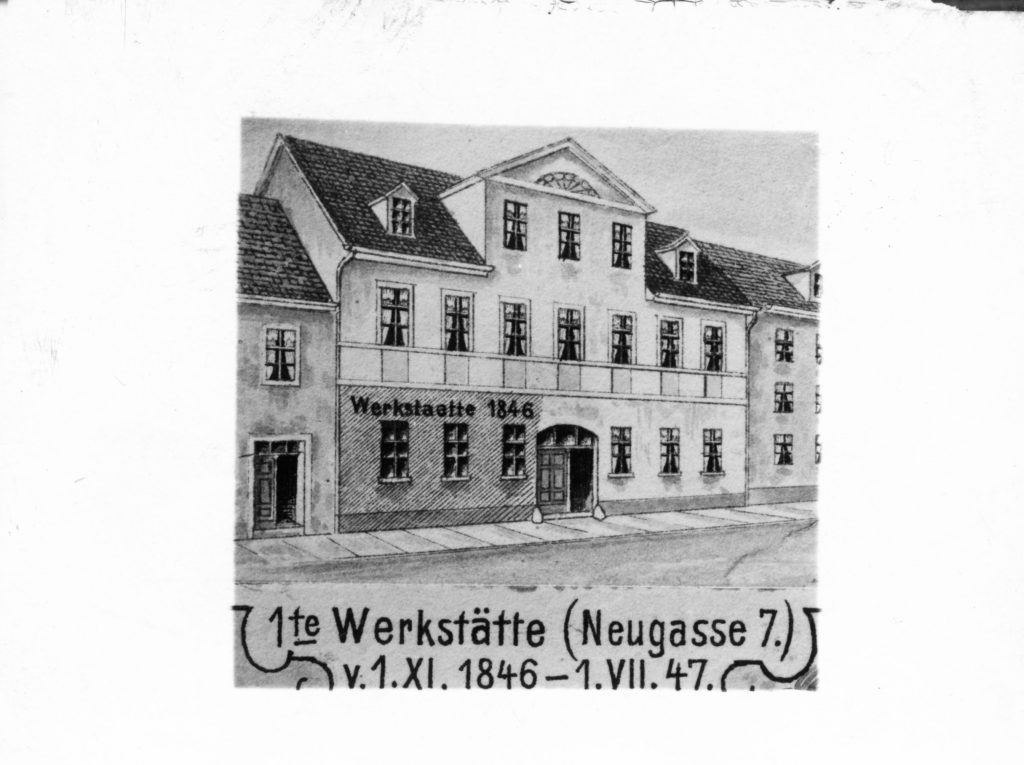
The microscopes based on Abbe’s designs and theory sold extremely well. By the end of the 1880s, Zeiss’ company had outgrown its humble beginnings as a one-man workshop once and for all. At that time, the ZEISS workforce numbered 360 workers and company officials. In 1884, by which time Zeiss was approaching 70, Abbe founded the “Glastechnische Laboratorium Schott & Genossen” with the glass chemist Otto Schott, better known today as SCHOTT AG. The collaboration between Zeiss, Abbe, and Schott made it possible to mass-produce high-performance microscopes of consistent quality. In 1886, ZEISS produced its 10,000th microscope. Shortly thereafter (in 1888), Carl Zeiss passed away – but the modern era of groundbreaking discoveries in microscopy had long since dawned, and Jena was its intellectual and technological center. The university town located in the Saale Valley in the German state of Thuringia is considered the birthplace of the optical industry. In 1889, Abbe established the Carl Zeiss Foundation to safeguard the work he had done together with his partner for the long term. Today, it is not only one of the largest German foundations for the promotion of science, but also one of the oldest and best-known corporate foundations in Germany.
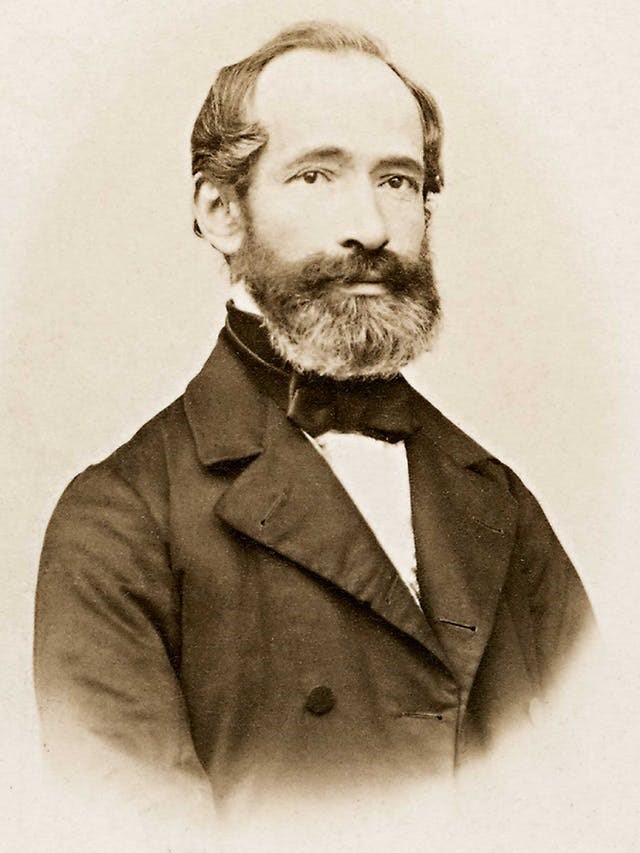
Carl Zeiss 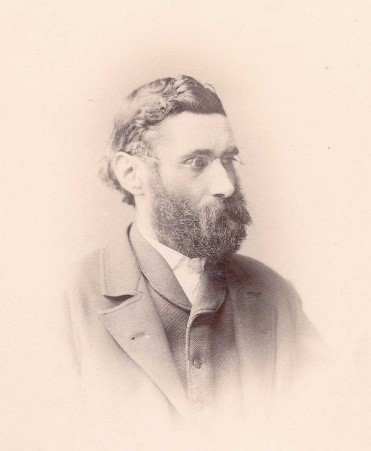
Ernst Abbe 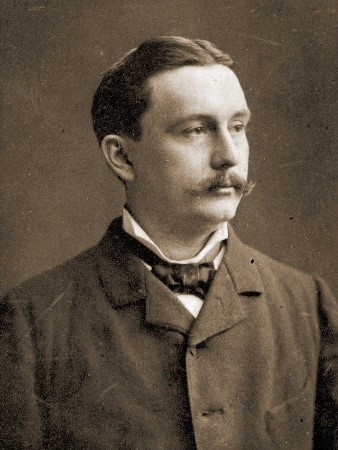
Otto Schott
ZEISS was also a pioneer in terms of working hours – Zeiss and Abbe founded the ZEISS health insurance fund in 1875. This was a groundbreaking move, as it guaranteed free medical care for ZEISS employees. In 1900, ZEISS was the first major company in Germany to introduce the eight-hour day. With the help of creative scientists and engineers, Abbe increasingly expanded the company’s range of products to include rangefinders and instruments for image measurement, photographic lenses, telescopes, periscopes, and binoculars. On July 9, 1893, ZEISS applied for a patent for a applied for a patent for a “twin telescope with enlarged lens distance,” in which two Porro prisms each direct the light into two monocular telescopes. In doing so, the company laid the foundation for the traditional design of binoculars as we know it today. The company began manufacturing the first commercially viable models in Jena only a year later, in 1894. By January 1900, ZEISS had already sold 20,000 pairs of its “Feldstecher” binoculars. After the turn of the century, the “Astro” Department, established in the 1890s, attracted considerable public interest with its observation telescopes. The ZEISS factory made a name for itself in the world of professional astronomy with its first large-scale instruments, the reflecting telescope for the Heidelberg Observatory and the most powerful instrument at the time, made for the Innsbruck Observatory. In 1908, the Jena-based company’s manufacturing range was expanded to include geodetic instruments. At about the same time, ZEISS also began to develop and manufacture eyeglasses and measuring instruments for ophthalmology. In June 1914, the ZEISS factory employed 5,280 people.
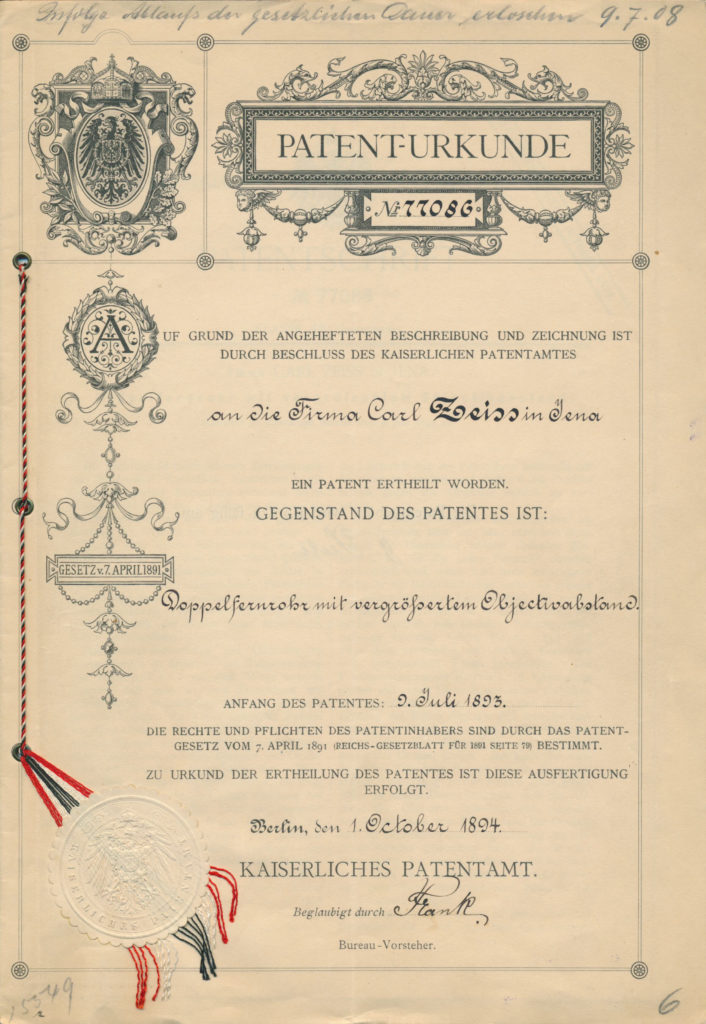
The patent application for a “twin telescope with enlarged lens distance” laid the foundation for the design of binoculars as we know them today. ©ZEISS Archives
The rapid pace of technological development at ZEISS did not slow down, even with the outbreak of World War I. In the second part, we will look at ZEISS’ history during the 20th century, which mirrors German history with all its highs and lows and features groundbreaking developments in the world of optics.